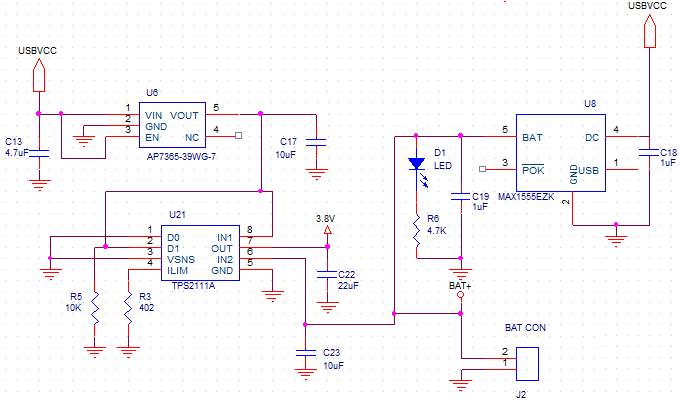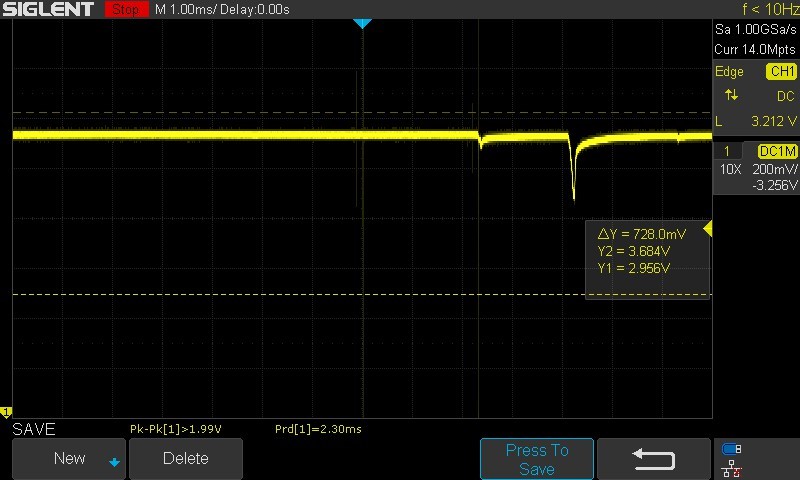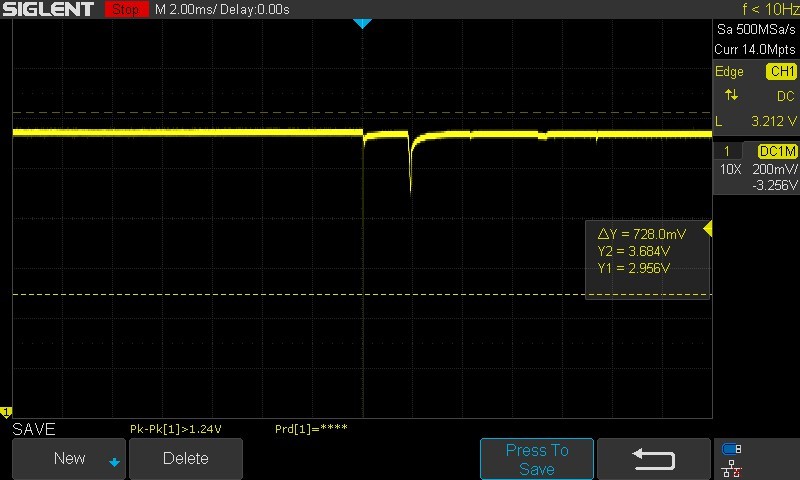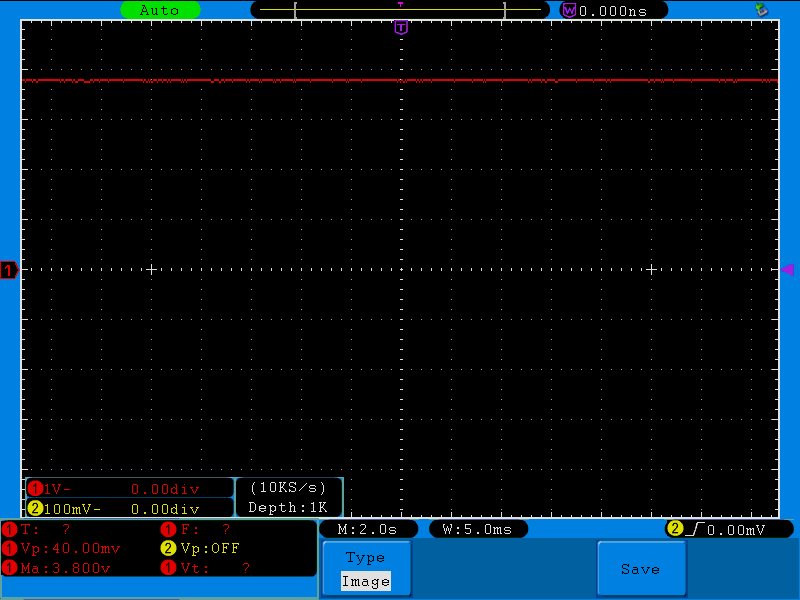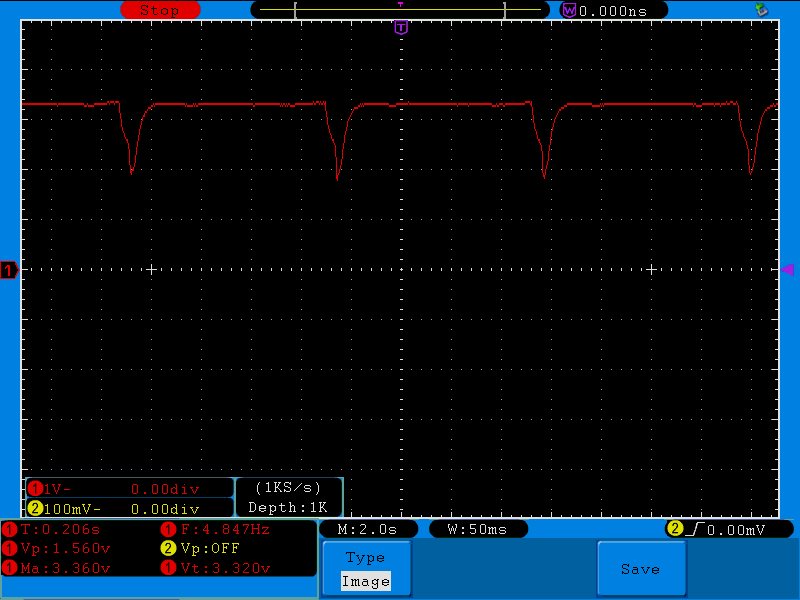Hi,
We are using the TPS2111A to switch power between a Lipo battery and a USB power source(regulated down to 3.8V) to power a device in one of our designs. Recently one of our customers has reported that the device is not wroking properly when the battery is the main power source. We measured the output voltage and there seems to be a 1V voltage drop between IN2 and the output. If the power is supplied through IN1, then it works fine (OUTPUT = IN1). This behvior has appeared around two months of using these devices on two devices so far. We have devices with other customers that have been working for a years now without this failure. Just wondering what the reason for this behavior could be. We have bypassed the TPS2111A and the device works normally when powered with battery. So there is no issue with the circuit after the TPS2111A. Here's the schematics part that uses the TPS2111A.
Thank you,
MJ


